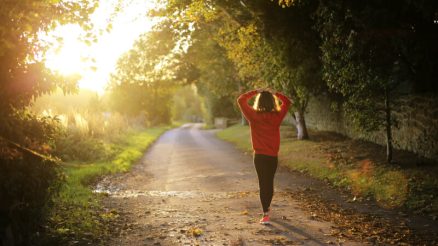As we age, staying mobile becomes one of the most important ways to maintain independence and quality of life. Walking is a simple, low-impact exercise that can significantly benefit seniors by improving cardiovascular health, strengthening muscles and bones, reducing joint stiffness, and enhancing mental well-being. The best part? You don’t need any special equipment—just a comfortable pair of shoes and a willingness to move.
Here’s a comprehensive guide for seniors who want to make walking a regular, safe, and enjoyable part of their daily routine.
Why Walking Is Important for Seniors
1. Supports Joint Health
Regular walking helps lubricate joints and reduce stiffness, especially in the hips, knees, and ankles. This is particularly helpful for seniors with arthritis or joint discomfort.
2. Strengthens Muscles and Bones
Walking helps maintain muscle mass, especially in the legs and core, which supports better balance and posture. It also promotes bone density, reducing the risk of osteoporosis.
3. Improves Heart Health
A consistent walking habit helps manage blood pressure and cholesterol, reducing the risk of heart disease and stroke.
4. Boosts Mental Well-being
Walking, especially outdoors, can lower stress, improve mood, and reduce symptoms of depression or anxiety.
5. Enhances Balance and Coordination
Regular walking trains your body’s coordination and proprioception (awareness of where your body is in space), helping reduce the risk of falls.
Tips for Safe and Effective Walking
1. Start Slow and Build Gradually
If you’re just starting, begin with 5–10 minutes of walking at a comfortable pace. Gradually increase your duration to 30 minutes a day, most days of the week. Don’t worry about speed; consistency is more important.
2. Choose the Right Footwear
Wear well-fitting walking shoes with good arch support, cushioning, and a nonslip sole. Replace them once the soles show signs of wear.
3. Warm Up and Cool Down
Start with slow walking and some gentle stretches to warm up your muscles. After your walk, cool down with a slower pace and light stretching to prevent stiffness.
4. Use Assistive Devices If Needed
If you use a cane or walker, don’t hesitate to bring it along. Mobility aids provide added safety and confidence while walking.
5. Stay Hydrated and Dress Appropriately
Wear light, breathable clothing and dress in layers for cold weather. Carry water and drink regularly, even if you don’t feel thirsty.
6. Walk in Safe, Comfortable Environments
Choose flat, even walking surfaces such as parks, walking paths, or shopping malls. Avoid areas with uneven sidewalks or heavy traffic.
7. Walk With a Friend or Group
Walking with others can make the activity more enjoyable and helps keep you accountable. Look for senior walking clubs or community programs in your area.
How to Stay Motivated
-
Set Goals: Use a pedometer or smartphone app to track your steps and progress.
-
Celebrate Milestones: Reward yourself for meeting your walking goals, whether it’s a small treat or a fun outing.
-
Mix Up the Routine: Try different routes or pair your walk with music, podcasts, or audiobooks.
-
Make It Part of Your Daily Schedule: Treat walking like an important appointment and build it into your day.
When to Check With Your Doctor
Before starting any new exercise program, it’s a good idea to consult with your healthcare provider—especially if you have:
-
A chronic medical condition like diabetes or heart disease
-
Recent surgery or joint replacements
-
Concerns about balance or dizziness
Your doctor or physical therapist can help you create a walking plan tailored to your abilities and needs.
A Sample Walking Plan for Beginners
| Week | Frequency | Duration | Intensity |
|---|---|---|---|
| 1 | 3x per week | 10–15 minutes | Easy pace |
| 2 | 3–4x per week | 15–20 minutes | Easy pace |
| 3 | 4x per week | 20–25 minutes | Moderate pace |
| 4 | 5x per week | 25–30 minutes | Moderate pace |
Tip: Always listen to your body. If you feel pain, dizziness, or extreme fatigue, take a break and consult a healthcare provider.
Final Thoughts
Walking is one of the most accessible and beneficial exercises for seniors. With a little planning and some motivation, it can help you maintain your independence, health, and mobility for years to come. Remember, it’s never too late to start moving—one step at a time.






